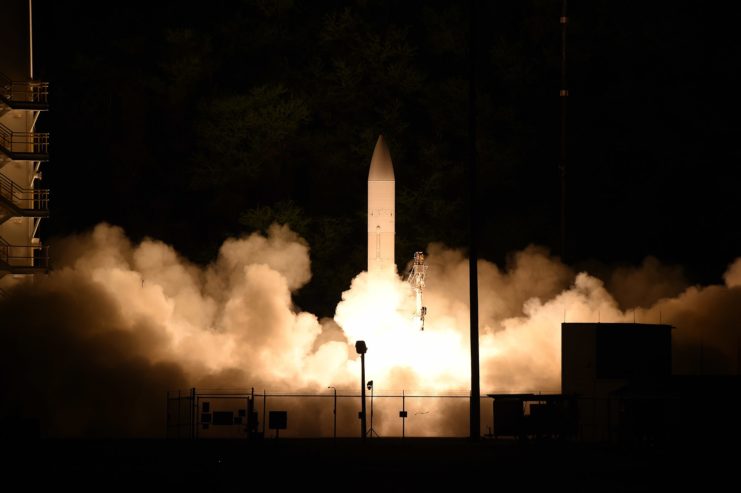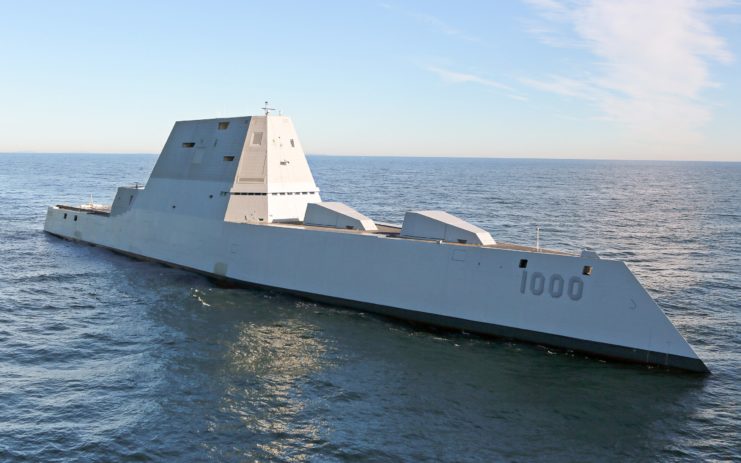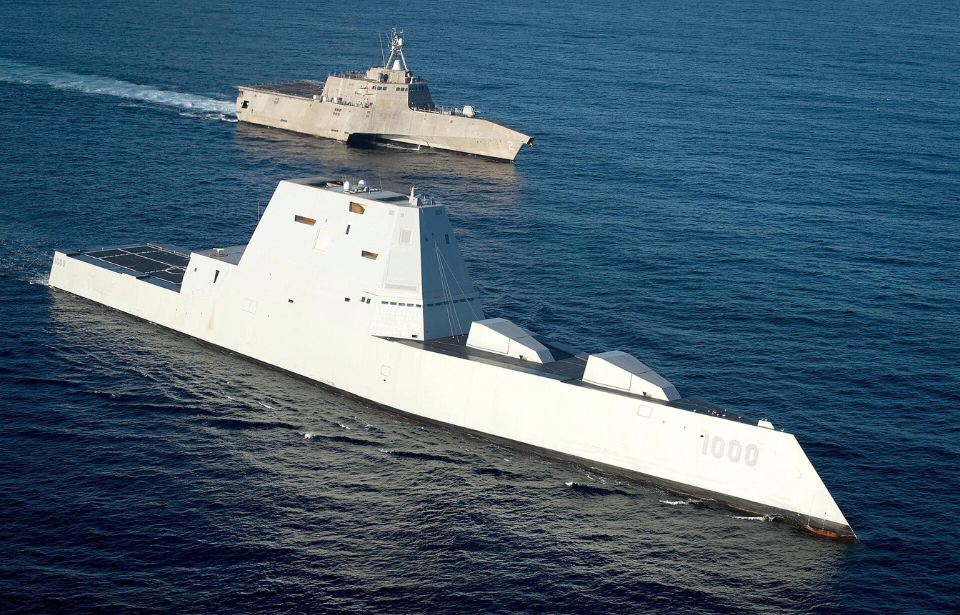
The Navy refers to the hypersonic missile as a conventional prompt strike weapon. It employs the common hypersonic glide body, which is being developed in collaboration with the US Army. The body, which houses the warhead, is launched by a conventional rocket booster. Once the booster is jettisoned, the projectile continues toward its target. Although it can no longer accelerate, it remains steerable.
This steerability, more than its ability to fly at speeds exceeding Mach 5, is what makes it so difficult to defend against—so much so that modern defense systems cannot counter it. This factor has made hypersonic missiles a major point of competition between the United States, Russia, and China.

The Zumwalt-class of guided-missile destroyers consists of just three ships: the USS Zumwalt (DDG-1000) Michael Monsoor (DDG-1001) and the upcoming Lyndon B. Johnson (DDG-1002). The lead ship was first delivered to the Navy in May 2016 and commissioned a few months later.
The guided-missile destroyers were designed by Northrop Grumman Ship Systems, and Raytheon Company served as the systems integrator. General Dynamics Bath Iron Works, Lockheed Martin, BAE Systems Land and Armament, and Boeing worked on the project as well.
The Zumwalt-class are designed to operate in littoral waters, so the Navy is working to outfit them as blue-water surface warfare and naval-strike platforms. Their primary weapon was to be the Advanced Gun System, with its pair of 155 mm guns using Long Range Land Attack Projectiles. Reducing the number of Zumwalt-class ships to three raised the price per shell of ammunition to nearly $1 million per round, so the service was forced to reconsider its original plans.
The main issues facing the Navy before it can implement the plan are that the hypersonic missiles aren’t completely developed yet, and the vertical-launch-system cells on the Zumwalt-class destroyers aren’t large enough to hold the new missiles.
In the middle of March 2021, the Navy solicited defense industry partners for ways to reconfigure the Zumwalt-class vessels, so they could handle the new hypersonic missiles. In the solicitation, they requested an advanced payload module that could carry the missiles in a “three-pack configuration.”
Gilday also mentioned that the Navy is looking for ways to use the power-generating abilities of the Zumwalt-class to use direct-energy weapons as a defense against emerging threats.
Are you a fan of all things ships and submarines? If so, subscribe to our Daily Warships newsletter!
After outfitting the Zumwalt-class guided-missile destroyers with the hypersonic missiles, the Navy plans to add the weapons to their Virginia-class submarines. The goal is to have the missiles on the former by 2025.
